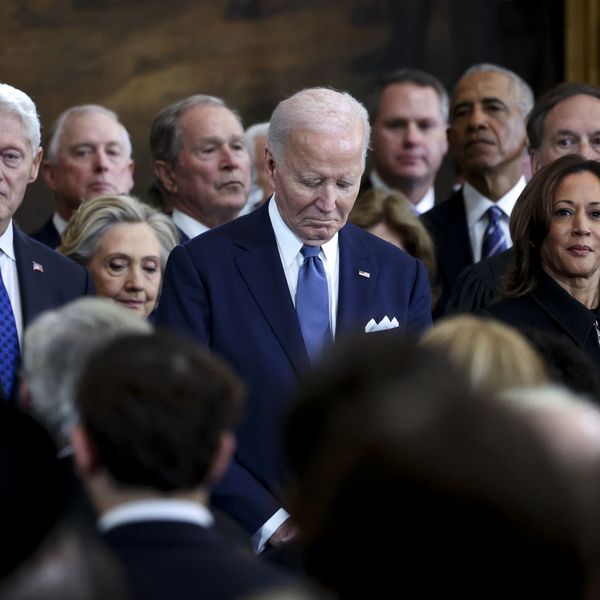Violence, Alexander Solzenitsyn once observed, finds refuge in falsehood, even as falsehood is supported by violence. "Anyone who has once acclaimed violence as his method must inexorably choose falsehood as his principle." (Nobel Prize acceptance speech, 1972) A practical rule can be deduced. Where there is violence, look for falsehood; where there is falsehood, look for violence. If Solzenitsyn is correct, they go together.
According to conventional wisdom, it seems that the "surge" in Iraq was a huge success. For example, a recent CNS News story was headlined: "With Success of Surge, NY Times' Iraq War Coverage Drops to All-Time Low" (October 21, 2008). The Times' coverage has dropped 60 per cent since 2004, and this is not terribly different from other news outlets. The media has lost interest in Iraq. Whether the surge really "worked," however, is another story.
In September 2007, Juan Cole, the respected Middle East expert, wrote an article called "Big Lies Surround the Iraq 'Surge.'" At that time he stated: "US troop deaths in Iraq have not fallen and . . . violence in Iraq has not fallen because of the Surge. Violence is way up this year." But, one might reply, that was then and this is now. How do matters stand more than a year after this gloomy verdict? A widespread consensus exists today throughout the political campaigns and the mainstream media that the great success of the Surge is beyond doubt.
The so-called Surge -- a euphemism for escalation -- was designed to increase security in Iraq. U.S. presence in the country was to be increased by 30,000 personnel along with a three-fold contribution in Iraqi forces. Additional troops were to be provided by coalition partners. Baghdad was selected as the center of the campaign. If security could be increased for the country's largest city, the rest would surely follow. A Shi'ite and Sunni "fault line" ran throughout the city.
In January 2007, a year after being launched, the Surge was widely acclaimed as a triumph. Contrary to naysayers like Cole, violence across the country was said to be down by 60 percent. Al Qaeda in Iraq, expelled from Baghdad and Anbar Province, was said to be on the run, and the Iraqi Ministry of the Interior reported that it was 75 percent destroyed. Not only was the violence in Iraq reduced, but Al Qaeda was being decimated.
Again, however, Cole, who relies on independent sources in the original languages, argued otherwise. What actually seems to have happened, he wrote in the summer of 2008, was that, first, the Sunni Arabs in Baghdad were disarmed by the escalation troops. Then, "once these Sunnis were left helpless, the Shiite militias came in at night and ethnically cleansed them."
Mixed neighborhoods in Baghdad ended up with almost no Sunnis. In 2007 Baghdad went from being predominantly Sunni to being overwhelmingly Shiite. According to Brian Katulis of the Center for American Progress, Baghdad, once having a 65 percent Sunni majority, "is now 75 percent Shia."
"My thesis," wrote Cole, "would be that the U.S. inadvertently allowed the chasing of hundreds of thousands of Sunni Arabs out of Baghdad (and many of them had to go all the way to Syria for refuge). Rates of violence declined once the ethnic cleansing was far advanced, just because there were fewer mixed neighborhoods."
Cole's thesis has received important confirmation. According to Bob Woodward, in his new book The War Within (Simon & Schuster, 2008), the biggest factor behind the reduced violence in Iraq was "very possibly" not the Surge, but a resort to Death Squads. A "Top Secret" memo viewed by Woodward indicates that the Sunnis were systematically targeted and assassinated. What took place was reminiscent of the infamous Phoenix Program instituted by the U.S. in Vietnam. It was a strategy of summary executions.
Yet another confirmation appeared in a recent study conducted by scientists at the University of California. Based on an examination of satellite photos across Baghdad, the study observed that Sunni neighborhoods, which showed a dramatic decrease of nighttime light in Sunni neighborhoods, had been abandoned by their inhabitants. The surge, the study concluded, "has had no observable effect." The study attributed the tremendous decline in Baghdad's Sunni population to relocations and ethnic cleansing.
Tom Hayden raises some disturbing questions. "Why were the targets killed instead of being detained? How many targeted individuals were killed or made to disappear? . . . How are the operations consistent with US constitutional law and international human rights standards?" Why has thee been no congressional investigation?
According to UN reports, the number of Iraqi refugees has spiked during the Surge. Between 2.5 and 4 million are now estimated to exist outside their country, while another 2.5 are internal refugees. At least 2 million Sunni refugees cannot return to their homes without fear of being slaughtered.
People's lives remain shattered. One in four has had a family member who was murdered. "The humanitarian situation in most of the country remains among the most critical in the world," according to the Iraqi Red Cross/Red Crescent. Iraq's health care system is "now in worse shape than ever."
Unemployment remains high, sanitation and electrical facilities remain degraded, families use up to a third of their monthly income to buy drinking water. Tens of thousands are being held in detention camps. According to the UN, "the detention of children in adult detention centers violates U.S. obligations under the UN Convention on the Rights of the Child, as well as accepted international human rights norms." (AP, May 19, 2008)
Resorting to Death Squads, while ignoring the humanitarian crisis and touting the Surge, seems to offer yet another instance of Solzenitsyn's bleak prognosis that violence seeks refuge in falsehood.


